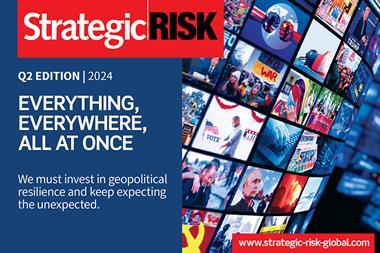Investing in Artificial Intelligence can help risk managers and their organisations win the war for talent, argues Piet Middelkoop, CEO of Van Ameyde Group
Europe, including the UK, is undeniably in the midst of a war for talent due to a widespread and growing scarcity of labour.
On top of incidental factors – such as the recent and ongoing Great Resignation in the wake of Covid – this labour shortage is also being driven by changing demographics, with real gaps emerging in certain age brackets.

The labour crisis – in both skilled and unskilled roles – is presenting a major threat to European businesses threatening economic growth and acting as a brake on innovation.
It is increasing the risks of disruption to normal day-to-day operations, reducing productivity, and impacting service delivery and research & development.
Against this background, it is no wonder that the challenges around increasing costs of recruitment and retention have rocketed up risk managers’ agendas.
Technology to the rescue
Companies and organisations have traditionally seen technology as an opportunity to bring productivity and process efficiencies, but it also has another major and important role.
Applied well, technology can help businesses to free up existing and future employees’ time, enabling them to focus on the more exciting and engaging aspects of their roles, and to open up new development opportunities.
“AI is not a threat to the workforce but rather a massive opportunity to change the balance of existing roles, to drive real change, open up new career and development paths and create stimulating jobs.”
And with labour increasingly scarce, the reality is that companies can’t afford to have good people doing roles that could be automated – after all we don’t ask people to push a plough through the land with a horse in front of it as well.
There has been much written about the threat of artificial Intelligence (AI) taking over many traditional and professional roles. But this narrative is completely missing the point.
AI is not a threat to the workforce but rather a massive opportunity to change the balance of existing roles, to drive real change, open up new career and development paths and create stimulating jobs.
New possibilities
AI is opening up new possibilities. Smart-decks for example, can recognise and read incoming emails and intelligently triage and allocate work based on a wide range of interlinked variables such as the size of the task, the different skill sets needed, location and availability.
In other words, it can make decisions, automatically, that presently have to be done manually by people.
Removing manual tasks, however, is not the key motivation. Doing so also means that existing employees can be cherished – they can be upskilled, retrained, and provided with more stimulating, fulfilling roles and development opportunities.
This ability to grow your own – not only helps reduce the need to attract so much new talent – but means that by default, when it comes to looking for new staff, the roles on offer are more interesting. It is a real win-win.
“By freeing up existing staff, we can then invest in them, open up more interesting and skilled careers – and win the talent war.”
So why is the wider business world not rushing to embrace AI and associated technologies and drive forward innovation? The answer seems to be narrow thinking.
Many of the roles that AI can do are, to be frank, ones that are not that well paid – which is why, when using traditional measures, it may look like investing £000 in AI does not stack up if the Return on Investment is measured on a pure cost basis.
But this is missing the point. The cost of attracting and retaining new staff also needs to be taken into consideration. By freeing up existing staff, we can then invest in them, open up more interesting and skilled careers – and win the talent war.
Embracing change
Van Ameyde, for example, which provides claims services to a host of different businesses and insurers, has a central platform with risk and claims data for the whole of Europe and is looking into if and how technology can drive hyper-automation, how it can be trained to take over functionality and free up employees to focus on adding value – and ultimately to have more interesting jobs.
Process Mining is also very exciting, where you can take workflow-based systems and see the complete process from end to end, including which and where decisions are made along with outcomes.
”As talent attraction, retention and motivation move up the corporate agenda, it is increasingly important that risk managers and business owners embrace all the tools at their disposal”
This can open up whole new possibilities for optimising processes and pinpointing where technology can be applied and where the outliers – that need human attention – really are.
There is also a moral dimension to embracing technology, with the removal of dull and often repetitive aspects of roles enabling jobs to be more rewarding and interesting – and therefore of course more attractive to existing and potential staff.
And as talent attraction, retention and motivation move up the corporate agenda, it is increasingly important that risk managers and business owners embrace all the tools at their disposal - including AI.




















No comments yet